Articles
The Material Culture of Childhood:
Problems and Potential in Historical Explanation
The discovery of childhood over the past two centuries, initially by educators, clergy, merchandisers, and sociologists throughout the nineteenth century, and then by child psychologists, antique dealers, writers, and social historians in the twentieth century, has meant an ever-expanding interest in the role of children and the concept of childhood. Part of this interest has focused on the things of children, on the surviving artifacts of past infancy, childhood and adolescence.
Two questions are posed about this interest in extant childhood artifacts: How and why has the material culture of childhood intrigued so many collectors, curators and scholars? What are the problems and possibilities of using such physical evidence in historical explanation? These questions are explored by reviewing how the objects of the child have been collected, exhibited, and interpreted over the past century. The essay's argument and supporting data, while largely drawn from the American historical experience, aims at providing a tentative overview of the topic.
Résumé
La découverte de la condition de l'enfance au cours des deux derniers siècles, faite d'abord par les éducateurs, les membres du clergé, les spécialistes des techniques marchandes et les sociologues pendant tout le XIXe siècle, puis par les psychologues, les antiquaires, les écrivains et les historiens sociaux, au cours du XXe siècle, a suscité un intérêt sans cesse croissant envers le rôle de l'enfant et le concept de l'enfance. On s'est notamment intéressé aux choses que possédaient les enfants: aux objets des bambins, des enfants et des adolescents d'autrefois, parvenus jusqu'à nous.
Cette étude pose deux questions sur l'intérêt manifesté à propos des objets façonnés ayant appartenu aux enfants et qui ont été conservés. On se demande comment et pourquoi la culture matérielle de l'enfance a suscité la curiosité de tant de collectionneurs, de conservateurs et de spécialistes, et on s'interroge aussi sur la nature des problèmes et des possibilités qu'entraîne l'utilisation de ces témoins d'un autre âge pour expliquer le passé. On explore ces questions en étudiant comment les objets que possédaient les enfants d'autrefois ont été collectionnés, exposés et interprétés depuis un siècle. L'étude, dont les raisonnements et les preuves apportées à l'appui sont tirés en majeure partie de l'histoire américaine, vise à donner provisoirement une vue d'ensemble du sujet.
1 Hector St. John Crevecour's insight - that understanding how a culture views its children provides a viewpoint from which to evaluate the culture — serves as a basic assumption for many contemporary historical studies of North American childhood. Knowing the child is, in part, a way of knowing the parent, the family, and the society.1
2 The discovery of childhood over the past two centuries, initially by educators, clergy, merchandisers, and sociologists throughout the nineteenth century, and then by child psychologists, antique dealers, writers, and social historians in the twentieth century, has meant an ever expanding interest in the role of children and the concept of childhood.2 Part of this interest has focused on the things of children, on the surviving artifacts of past infancy, childhood, and adolescence.
3 In this essay, two questions are posed about this interest in extant childhood artifacts: How and why has the material culture of childhood intrigued so many collectors, curators and scholars? What are the problems and possibilities of using such physical evidence in historical explanation? These questions are explored by reviewing how the objects of the child have been collected, exhibited, and interpreted over the past century. The essay's argument and supporting data, while largely drawn from the American historical experience, aims at providing a tentative overview of the topic. It is hoped that this perspective will be useful in comparison with parallel social history research in other countries.
Collecting Childhood
4 What motivates collectors of childhood artifacts? To begin with, all the basic impulses of general collecting: acquisitiveness, an attraction to the past, investment potential, innate curiosity, historical associationism. Can we, however, point to any particular reasons why the artifacts of childhood might be of any special interest to collectors? No one really can say for sure since no one has yet systematically explored the ethnography of the collecting of childhood material culture. In the United States, we know something about why individuals such as Margaret Woodbury Strong, Louis Hentz, or Electra Havermeyer Webb were attracted to childhood artifacts, but we know very little about the personal motivations behind collections in thousands of North American local museums and county historical societies.3
5 Perhaps, in addition to the motivations of the general collecting tendency, we are also attracted to the objects of the child for specific reasons. These may be partially gender-related, partially scale-related, and partially time-related.
6 For example, it is statistically true that until our own time the vast majority of childhood collectors have been women. The female functions of bearing and (until the recent past) of raising children is one obvious reason for this. The injunction to be a "madonna in-the-nursery" as Harvey Green has characterized this demanding task was but another of the nineteenth-century American woman's many roles as the "light of the home." The Victorian cult of domesticity underlies, in part, the feminine inclination to collect the domestic.4
7 The human delight in miniaturization may also account for why many individuals, men as well as women, collect the things of the child. A child and a child's things permit one to invert the average adult's proportion of scale. Childhood material culture enables us to re-examine life at a Lilliputian level. For modern adults who live so much of their lives in physical environments of gargantuan and grotesque proportions — the world of the skyscraper and the freeway — the opposite world of the diminutive and the dwarf is both cognitively relaxing and aesthetically pleasing.
8 Adults are drawn to the doll house or the model train, perhaps for some of the same reasons they are taken by material culture exhibits featuring patent models or dioramas. A child's world, as the Indiana poet James Whitcomb Riley reflected in his evocation of "A Boy's World," is a deliberately small world, a manageable world, a world that we adults can hold in our hands or in our arms.
9 The child's world is also a world we have lost. We try to regain it, in part, as parents and grandparents, as collectors and curators, but try as we may, it is gone as is all the past. And yet its artifacts remain, some in memory and some in museums. In collecting such material culture, adults may be trying to recollect a universal human experience, childhood. As adults, endowed with all the knowledge gained during our own childhood, we cannot help but often view the childhood of others as a metaphor for our own previous experience. Childhood is our own first historical era, an era we know first-hand, not vicariously, as we know so much of the past. To be sure, our rememberance of that childhood is extremely fragmentary and even fearsome, but it is also one of fantasy and fun.
10 Twentieth-century children's literature, progressive education theory, and much child psychology foster the cultural belief that childhood was, or should be, fun. This is another way of saying childhood means games and toys — the largest category of all extant childhood material culture. Fun is also simply another reason for collecting the things of the child. The old adage, "The only difference between men and boys is the size of their toys," has a corollary that would suggest that many adults, still boys and girls, take great delight in playing with children's toys. William Blake put it this way: "The child's toys and the old man's reasons are [but] the fruit of two seasons."
11 Toys are, without doubt, adults' favourite form of childhood material culture. Entire private collections are devoted only to them; whole museums house their special genres.5 This is not surprising since most manufactured toys are objects made by adults to appeal and to sell to other adults, ostensibly, of course, for children. Toys are the artifacts of two cultures. They can reveal as much about a society's adults as its children. Perhaps more. Moreover, what individual collectors amass of an earlier childhood era may reveal as much about the collectors themselves as about the historical period from which they collect.
12 Since toys are probably the most exhibited and most written about of all childhood artifacts, only two observations, one obvious and one usually ignored, will be made here about them.6 The obvious is, that in the selection of toys, children have often been encouraged to follow the role models, the occupations, and the technological fads of their elders. Such toys have usually been advertised as being more appropriate for one sex than the other. Adult collectors, male and female, have been similarly attracted to such toys.7
13 They have not, however, been as thorough in saving what Sidney Brower labels "makeshift toys"; George Basalla calls "transformed objects"; Mac Barrick labels "folk toys"; Janet Holmes and Loet Vos identify as "found toys"; or what might simply be called "kid's toys." Such home-made or modified toys can be any object that a child continually delights in and uses as a means for deriving amusement or entertainment rather than as a means for accomplishing a set task, a specific educational objective, or a toy manufacturer's advertised goal. "Kid's toys" are often concrete proof of the material culturist's dictum: "One man's trash is another's treasure.' Of course, anyone who has ever watched a child (or been one) knows "kid's toys." Such artifacts may be among the few distinct authentic artifacts of childhood in that they are made, remade, remodelled, or renamed by children themselves.
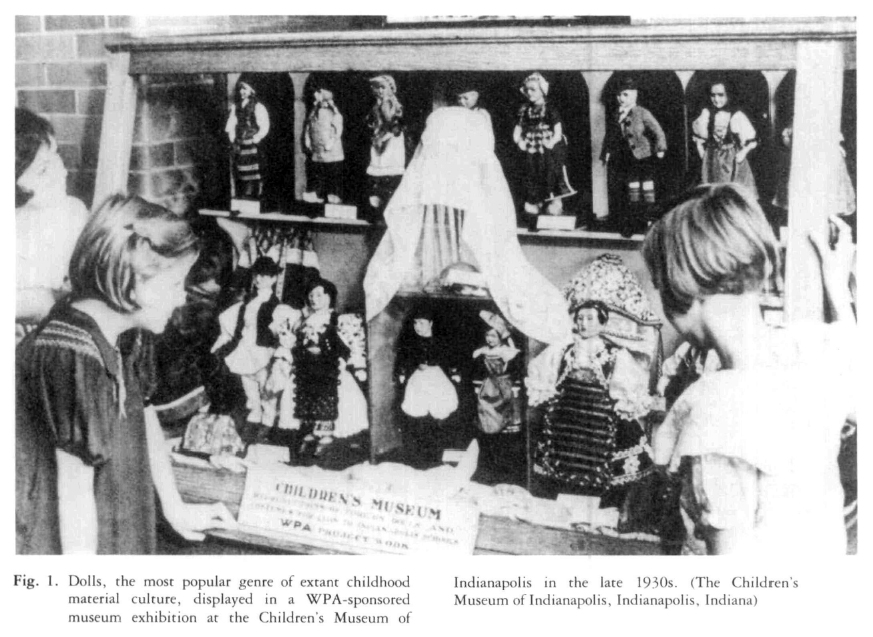 Display large image of Figure 1
Display large image of Figure 114 Take, for example, a typical two- or three-pronged pitchfork commonly found on many nineteenth-century North American farmsteads. In a child's imagination, this agricultural tool cannot only be a device for pitching hay, but also a horse to ride, a writing or drawing tool for marking on the ground, a boat to float down a rivulet, a javelin or spear to throw, or even another person ("a stick man") to befriend. In the past, as in the present, a plaything could be and was anything the mind imagined — for a moment, an hour, for months or years. To the bounty of nature, the nineteenth-century consumer and industrial revolutions added a vast material world from which children might craft their own toys or play objects: pic-plates (probable prototype for the first Frisbee), key rings, tires, clothespins, coat hangers, metal washers, tin cans, ballpoint pens, bottle tops, rubber bands, and paper clips, paper cups made into rattles, metal washers used in tossing games, coins used for tabletop football, clotheslines cut down for jump ropes, broomsticks modified tor bats in stick ball games.
15 Some of these items have been modified by children in the course of play, others have not. Some of them researchers will be able to decipher and interpret; others will remain known and understood only by their original creators. We need to collect and study more of this childhood material culture. While some of it may prove highly idiosyncratic, enough of it may reveal patterns that will tell us as much about creativity, imagination and aesthetics as any of the manufactured or educational toys that predominate in most museum collections.9
16 Costume, after toys, is probably the second largest category of childhood material culture. The collectors of children's costume have gathered data that help us understand gender, age, class differentiation, rites of passage and concern for healthy physical development in child rearing.10
17 Yet many childhood costume collections share the same evidential biases that costume historians and curators bemoan for adult clothing: far fewer male costumes than female ones; far more examples of formal clothing than work or play clothing; greater instances of specialty dress (for example, school uniforms, debutante dresses, and sailor suits) than everyday knock-about hand-me-downs. In material culture research, this illustrates the fecklessness of data survival.11
18 Private collections of childhood artifacts are also lacking in the material culture of nurture. Convenience chairs, nursing bottles, feeding trays, eating utensils, processed baby foods, diapers, chamber pots, potty chairs, sanitary and toilet artifacts, and medical aids are not often found in such collections. Underrepresented as well are the artifacts of child discipline: rulers, whips, belts, rods, birches, or the infamous paddling "sticks" are found in few museum collections and fewer museum exhibits.12
19 A third popular medium in the museum collecting of childhood is graphics, particularly photographs. Postmortem daguerreotypes as well as Kodak Brownie snapshots are part of this extensive visual record. So, too, are the innumerable photographs of rites of passage, kinship patterns, parent-child relations and school functions.13
20 While child photography will be analyzed again in the next section, "Exhibiting Childhood," two observations about this type of material culture are pertinent here. First, no child has lived long enough to comprehend fully the dangers and delights of recorded life. No child's experience has provided him or her with the time and the space that gives one a true sense of the past, of moments lost forever or, antithetically, a developed sense of the future, of the inevitable process of aging and death. Therefore, unlike adults, children (until a certain age) face the camera largely innocent of all but the present moment and often with a startling purity of motive. This characteristic can be very useful in cultural explanation and historians might explore it more systematically than they have to date.14 The photographer (usually an adult) behind the camera, however, is another case entirely. The adult photographer invariably brings to his or her task a fixed set of beliefs, their own and their era's, about the nature of childhood.
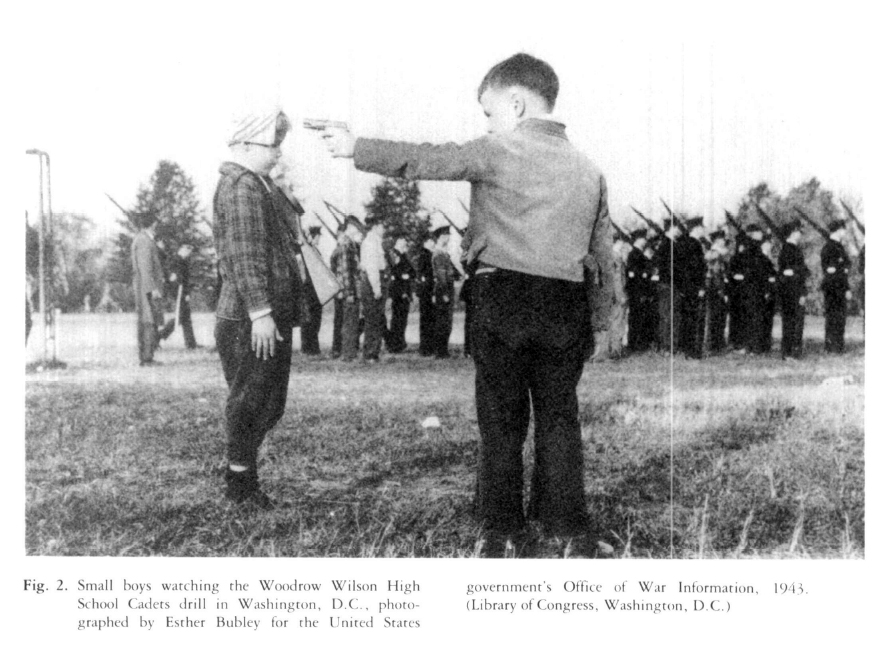 Display large image of Figure 2
Display large image of Figure 221 A second point that might be made concerning the relationship of photography and children is that the century of the latter's expansion in our consciousness (roughly 1840-1940) coincided with the century of the former's democratization in our culture. Perhaps this coincidence is causal. Could it be that the invention of the camera and its widespread use over the past hundred years has helped make us much more sensitive to the various stages of infancy, childhood, youth, and adolescence? As soon as the family photograph album encouraged us to marvel how much a young boy had grown between the ages of six and eight or how much a young girl had matured between thirteen and sixteen, did we not find the idea of childhood reinforced so strongly that we began to divide up and also chronologically expand this pre-adult stage of the life cycle?
 Display large image of Figure 3
Display large image of Figure 3Exhibiting Childhood
22 Photography has figured extensively in many past museum exhibitions of childhood. For example, a selection of artifacts and images of American children were displayed at the Women's Building at the 1876 Centennial Exposition in Philadelphia. Less than twenty years later, a separate Children's Building was designed for the Columbian Exposition in Chicago in 1893. At such international trade fairs, of course, children were also on display as advertising icons, as potential consumers for the numerous child-specific objects (such as miniature tablewares, children's furniture, or ready-made clothing) and as culture totems in a highly sentimental age. For instance, Bertha L. Corbett's "Sunbonnet Babies" were but one of the numerous generic, turn-of-the-century stylized icons that became popular decorative elements of many domestic goods such as napkin rings, trivets, platters, and postcards.15 Perhaps no one exploited this use of children-as-objects like Currier and Ives did in their two hundred lithograph images of children, depicting them on one hand as symbols of lost innocence in a Gilded Age and on the other, as James Russell Lowell expressed it in The Changeling, as an active force for godliness and reform.
23 Photographic firms and photographers also often exhibited children in these two ways. The George Eastman Company, for example, claimed that their cameras were so simple, even a child could "Push the Button" and they would do the rest. Brownie Cameras, capitalizing on the popularity of Palmer Coxe's amusing elves as well as suggesting the name of the camera's designer Frank Brownell, were developed largely for a pre-adolescent market. As a consequence of the enormous expansion of photography in the twentieth century, the modern child may be the target of the camera more than anyone. Almost every life moment can be captured; thus we have photos of children before birth, during birth, at birth, in the hospital, at home, in school, at play, at work.
24 American photographers such as Jacob Riis and Lewis Hine worked diligently that we would one day no longer see children at work in factories, mills, and mints, at "home" or "piece" work in tenements; or in selling goods and services in saloons, shops, and city streets. This child labour photography formed the core of various exhibitions during the Progressive era. In recent times, institutions such as the Brooklyn Museum, the New York Historical Society, and the Chicago Historical Society have mounted exhibits, particularly of Hine's work, usually with special emphasis on his labouring children.16
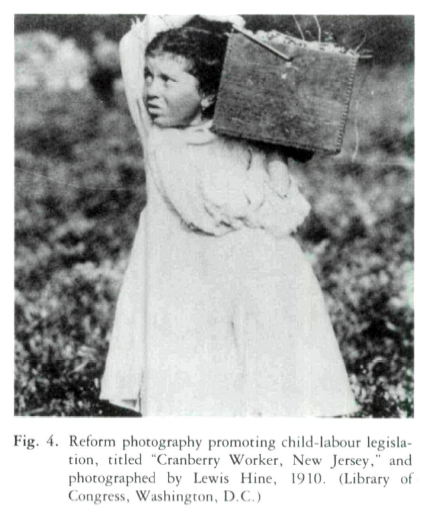 Display large image of Figure 4
Display large image of Figure 425 In these exhibitions of the child-as-innocent-victim, early documentary photographers have resorted to an old documentary ploy: using the child as an instrument to stimulate adult indignation over social evil. No one used this reform technique better than the U.S. Government's Farm Security Administration (FSA) photographers of the Great Depression. This visual material culture has been used repeatedly since the 1930s to characterize our visions of that decade. Father may be out of work, out of town, and out of hope, but mother and child are always together. This mother and child conceit, an ancient one in iconography, pervades this enormous corpus of childhood visual data as well as the museum exhibits, catalogues, and other publications that have interpreted the FSA data.
26 Such imagery can be found in two fairly recent American museum exhibits, Images of Childhood, a 1977 show of popular daguerreotypes, prints, and photographs prepared by the Museum of Our National Heritage (Lexington, Massachusetts) documents the now familiar nineteenth-century transition of the child from a miniature adult to an innocent child at play. Susan Kismaric's American Children, mounted at the Museum of Modern Art (New York City, New York) in 1980, is a more ambitious use of photographs in childhood research and a more successful one. The photographs included in the catalogue are presented in reversed chronological sequence. One sees them, therefore, as a pictorial record, viewed backward through time, enabling one to understand both children and photographers, especially how the latter reveal their own personal and cultural perspectives in various eras. At the same time the movement from past to present, an act comparable to looking at one's family album from the back to the front, evokes the memories of one's own childhood history and proves doubly revealing.
27 American Children emphasizes, as most museum exhibitions on American childhood do not, the life and times of twentieth-century children. The modern photography of Diane Arbus, Edward Weston, and Helen Levitt also provides us with valuable counterparts to the nineteenth-century work of Francis Benjamin Johnson, John Bullock, and Timothy O'Sullivan. Finally, this photographic exhibit displays an awareness of adolescent sexuality that is almost always completely ignored by most museums interested in childhood. In both Diane Arbus's and Emmet Gowing's photographs of adolescent couples, we are shown the beginnings of the male/female bond that presages their future and reveals the photographer's acknowledgement of burgeoning sexuality; in work by these two photographers the young boys attempt the postures of grown men, wrapping their arms around the girls in possession and protection. To make a further point, Godwin posed his couple before an automobile, the American symbol of social liberty and, on occasion, teenage sexual opportunity.17
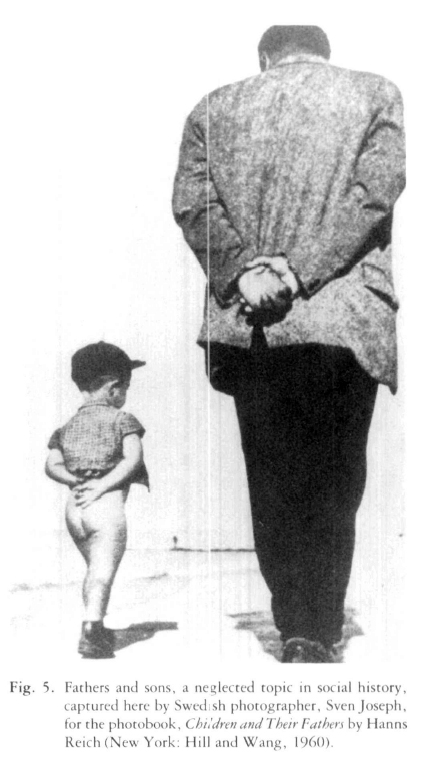 Display large image of Figure 5
Display large image of Figure 528 In addition to temporary and permanent museum exhibitions devoted to children, over a hundred children and youth museums presently exist in the United States From the A.M. Chisholm Children's Museum in Minnesota to the Zigler Museum for Children in Louisiana, there exists a particularly American museological phenomenon worthy of attention in the study of American childhood. Yet few museum exhibits or museum historians recognize the role that museums in general, and children's museums in particular, have played in social, educational, and cultural history of the American child.18
29 The Brooklyn Children's Museum, often acclaimed as the first in the world, opened its doors on December 16, 1899. Other American cities followed this innovation in museum theory and practice: Boston in 1913, Detroit in 1917, Indianapolis in 1925. Canada's first children's museum was the London Regional Museum opening in 1975. The real children's museum boom in America, however, can be closely correlated with the post-World War II baby boom. When Eleanor M. Moore wrote Youth in Museums, an early classic 1941 study in the otherwise barren terrain of children's museum history, only eight children's museums were housed in their own buildings — those in Boston, Brooklyn, Cambridge, Detroit, Duluth, Hartford, Indianapolis, and San Francisco. Now that number is well over fifty.19
30 The first four American children's museums, particularly their early history, philosophy and exhibition techniques, reveal much about their use of childhood material culture and what it suggests about the museum interpretation of American children in the first quarter of the twentieth century. Although most American children's museums began without professional leadership or sizeable collections, behind each of these institutions, was an aggressive, talented, often affluent, woman or cadre of women. Such women had visions of a children's museum as a necessary intermediary institution (like the school or the family) to improve the life of American young people who lived in a society that was increasingly becoming industrialized, commercialized, and urbanized. Not surprisingly, most of the early children's museums were (and still are) in urban settings. Among the first four, at least two — the Adams House in Brooklyn and the Cary Mansion in Indianapolis — were established first in old family homes, quaint domiciles with local history associations then thought appropriate for childhood nurture.
31 An interest in child psychology and progressive education theory can also be detected among American children museum founders, especially among their directors and curators. For instance, Louise Condit, supervisor of education at the Brooklyn Children's Museum, was an ardent disciple of John Dewey. The first name of the Indianapolis Children's Museum was the Progressive Education Association and a "learning by doing" philosophy guided its early efforts. Close liaison in many children's museums was often maintained with many city's school systems, with some children's museum curators seeing themselves as public school faculty and part of departments of public instruction.20
32 Most of the early collections of children's museums were the proverbial "cabinets of curiosities," mixtures of natural history, technological, and historical objects. However, early curators appeal to have been more permissive in their tolerance of children handling the collections, a pioneering learning approach that we now call "participatory experience" and an educational philosophy that one museum (the Please Touch Museum in Philadelphia) incorporates in its name. Unfortunately, to date, we have only one major institutional history of an American children's museum, The Children's Museum of Indianapolis, that explores the role of these early children's museums and their cultural aspirations.21 What were their relationships with each other? What were their relationships with other contemporary institutions that also occasionally had museums and organizations such as settlement houses, boys and girls clubs, historical societies? In what areas, science, art, history, did they develop first and best? How did they relate to traditional museums? In what ways were they influenced, for example, in formulating their own organization, the American Association of Young Museums, by the larger museum community? In what way did they influence (for instance, with "hands-on exhibits?") mainstream museum practice? In short, the history of North American childhood would profit from a systematic examination of the history of childhood museums in their institutional and cultural context.
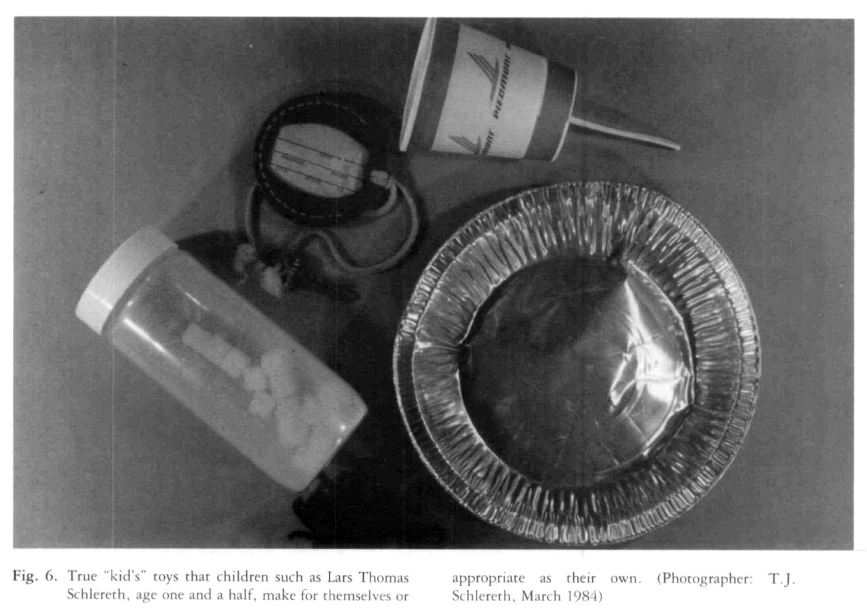 Display large image of Figure 6
Display large image of Figure 6Researching Childhood
33 In addition to collecting and exhibiting the artifacts of childhood, a small group of scholars have been at work researching the history of childhood, particularly in the nineteenth century, as a subfield of their wider interests in literary, or psycho-, or social history. This cadre, largely based in North American universities and, in one sense, the last to take up the topic of childhood after private collectors and museum curators, has been principally concerned with the meaning of the extant documentary and statistical evidence in the interpretation of past childhood.22 Only recently have a number of such historians turned to probing the explanatory potential of the things of the child.
34 The relationship of literature and childhood was among the first to be pursued both by literary scholars interested in what is written by, for, and about children as well as by social scientists and historians fascinated by the enormous outpouring of normative children's literature that the United States has produced from John Corton's Spiritual Milk for Boston Babies in Either England (1656) to the latest edition of Benjamin Spock's The Common Sense Book of Baby and Child Care (1985).23 The research of Ann McLeod, Margaret Maloney, Mary Rubio, and Barbara Harrison has greatly expanded our understanding of the special literary interest group that Virginia Haviland calls "the open-hearted audience."24 Scholarship on children's literature now has achieved such an academic visibility in the United States that at Simmons College in Boston, there is even a Center for the Study of Children's Literature leading to an M.A. degree in the specialty.
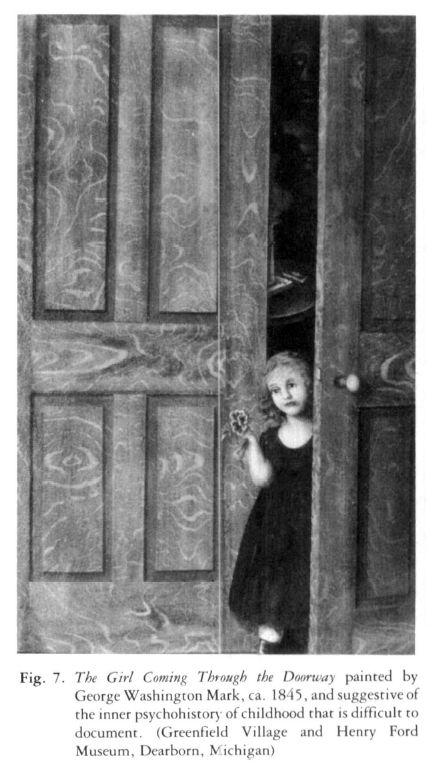 Display large image of Figure 7
Display large image of Figure 735 Research on children's playthings and playing has been organized for the last decade by the Association for the Anthropological Study of Play (TAASP). Published proceedings of these international meetings suggest that much hard work (or, is it just scholarly play?) is being done on play in a wide range of disciplines. The TAASP lists the research interests of its members as anthropology, physical education, psychology, recreation, history, paediatrics, folklore, dance, the arts, competitive athletics, ritual, kinesiology, learning research and development, film, political action, urbanization, archaeology, human kinetics, games, dramaturgy, fantasy, humour, symbolic play.
36 Bernard Mergen's Play and Playthings (1982), Helen Schwartzman's Transformations: The Anthropology of Play (1978), Brian Sutton-Smith's Folk-Games of Children (1972), and Alice Cheska's Play as Context (1981) typify current American research in the field of children's play, perhaps the most widely studied area of childhood research.25 Mergen's book has a particularly useful chapter on the material culture of public play, especially on urban playgrounds and playground equipment.
37 Parallel with the social scientific studies of American childhood, an enterprise whose history extends back into the late nineteenth century in the United States, is the more recent work of the past two decades in the social history of childhood, particularly as it is manifested in family history and to a lesser extent, in women's history. Child rearing, for example, as studied by Philip Greven, John Demos, Alice Ryerson, and others, has been a major concern of historians monitoring the American family.26 Those using material culture evidence explored various forms of child control (toys, chairs, playpens, harnesses, playgrounds); child foodways, and child educational toys.27 In this context, however, still more research is needed on child toilet training, on non-parental child care (nannies, wet nurses, governesses, baby sitters), and the role of children's pets in child life.
38 Social historians interested in childhood also need to research motherhood and fatherhood in more systematic ways than they have. Motherhood has received attention but American fatherhood has only begun to be given historical evaluation. J. Jill Suitor's study, "Husbands' Participation in Childbirth: A Nineteenth-Century Phenomenon" and Charles Strikeland's "The Child-Rearing Practices of Branson Alcott" are examples of this type of research.28 On the topic of fathers, we might ask what types of artifacts and activities do they choose for their daughters as opposed to sons? Has this pattern been true throughout North American history? Do rural fathers relate differently to sons and daughters than urban fathers?
39 Scholars have largely neglected the material culture history of rural childhood. Differences as to education, recreation, and work between rural and urban child life prompt us to recognize that during the period 1820-1920 there were various childhoods in North America — various as to ethnic background, economic class, religious persuasion, and geographic region. Such comparative study also suggests that historians might explore, with a special research effort devoted to the rural young, whether or not the currently held hypothesis that sees the adult perception of North American children as something of a triple-stage metamorphosis (a miniature adult in the eighteenth century, an innocent child needing nurture in the nineteenth century, and a special and separate youngster in the twentieth century)29 needs revision for certain segments of the rural adult and child populations during certain historical periods. Could it be that rural children, at least prior to the early twentieth century, were less likely to be viewed in this way? Might their involvement in fewer formal educational activities and more "play" times relating closely to work (4-H; Future Farmers), their recognized status as a responsible part of their farm family's economy, and their earlier (compared to urban middle-class children) full-time entry into the adult world of work and worry have meant that many American rural parents regarded their offspring at the end of the nineteenth century in a fashion not all that different from American parents at the end of the seventeenth century?
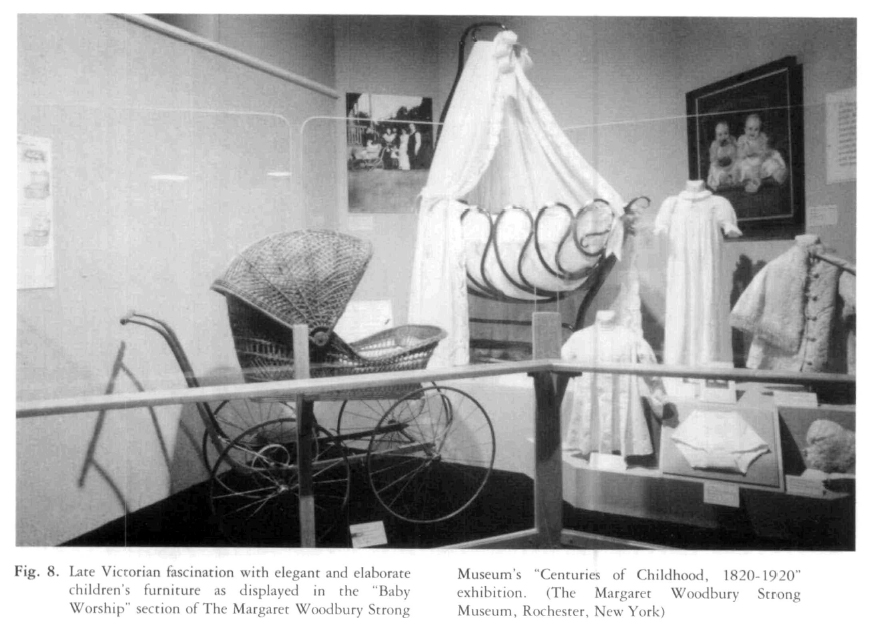 Display large image of Figure 8
Display large image of Figure 8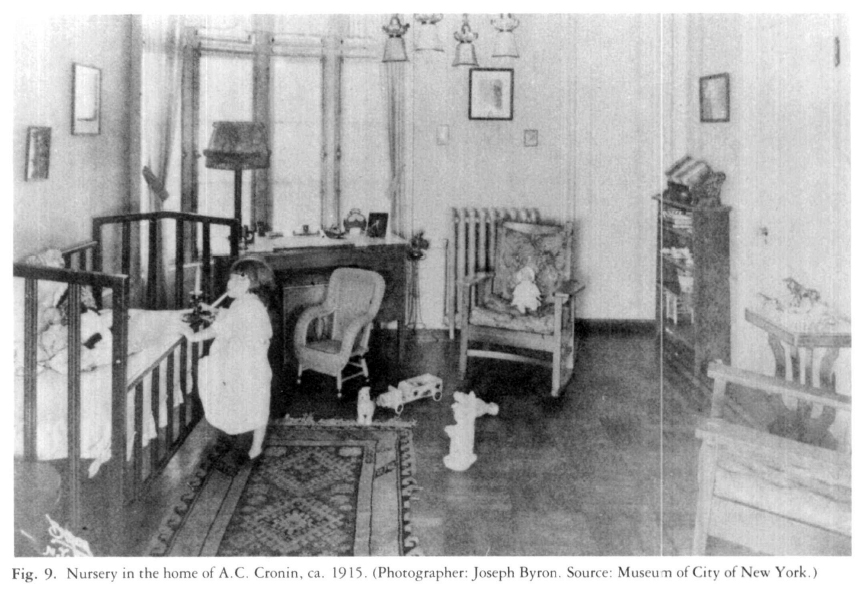 Display large image of Figure 9
Display large image of Figure 9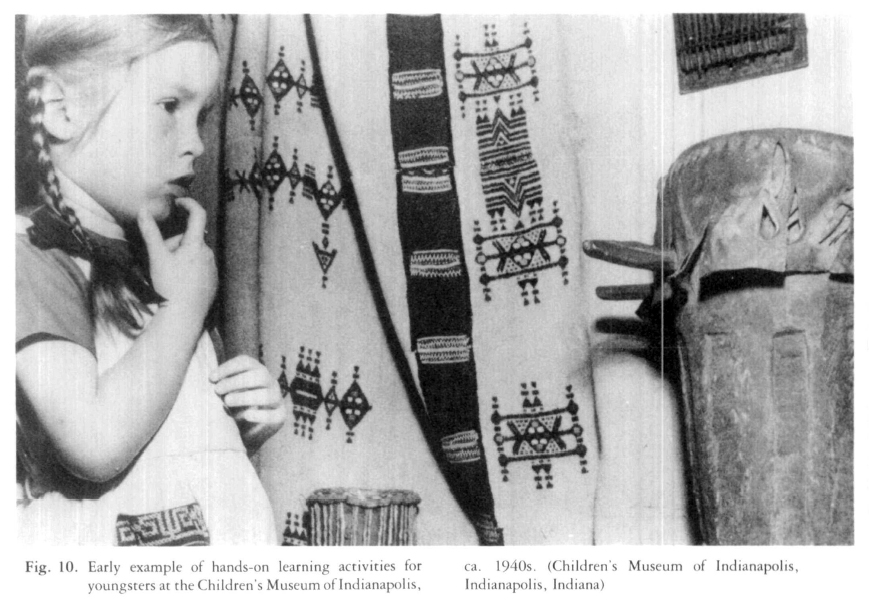 Display large image of Figure 10
Display large image of Figure 1040 Another way of asking this question would be, to use sociologist David Reisman's terms, have there been both "inner-directed" and "outer-directed children" as there have been adults? If so, how can the historian probe this inner life, this psychohistory of his or her subjects? What can we ever know of children's personal or private history other than what we see when we hold them up to us and usually see but ourselves write small?
41 The psychohistory of the North American child has yet to be, and may never be, written. Historians such as David Potter, Peter Gay, and Michael Kammen, given their interest in social psychology, child training, sexual initiation, and the life cycle, urge us, however, to attempt such history if we are to approximate a more comprehensive understanding of past childhood experience.30
42 Admittedly one of the major drawbacks in researching the private, as opposed to the public, history of childhood is the paucity of child-generated sources. Most historical data on childhood is either adult-generated or adult-controlled evidence. As such, it is prone to exaggerate human efficacy in the past, a common liability of material culture evidence.31 Yet certain material culture may help us partially explore a child's inner worlds. Perhaps research investigations of their personal environments (such as private rooms, basement or attic domains, or special closet enclaves) that the child can modify may prove revealing. There are also artifacts in addition to folk or "kid's toys" mentioned earlier that children personally manufacture — clubhouses, hideaways, tree-houses, and other special places off limits to adults. In a new study of California vernacular architecture, Home Sweet Home, several architectural historians examine such data, much of it highly transient and ephemeral, but also informative and insightful in a way that offers clues as to how we might better understand past and present children's sense of space.32
43 In addition to the neglect of the private past of childhood, historians have not adequately researched its deviant underside. Middle-class reform crusades to control rowdiness, tobacco and alcohol use, truancy and other misdemeanours among children are being documented.33 But the nineteenth-century history of the urban street gang, the unwed teenage mother, the physically disabled, of the hardened juvenile criminal remains to be written. Nor should we forget adult deviancy with regard to children. What do we know of the forms of child abuse, sexual harassment, and commercial exploitation to which nineteenth-century children were subjected? Although grisly and unsavoury subjects, they are nevertheless part of the historical record. Some work has been done — Sharon Burston's plotting of infanticide rates and Myra Glenn's survey of the form and extent of corporal punishment — but numerous facets of past domestic violence are still ignored, even by many social historians.34
44 Finally, social historians are only beginning to study the separation, segmentation, and segregation of childhood — a trend that begins in the nineteenth century in institutions such as children's aid societies, the YMCA and the YWCA, the Boy Scouts and the Girl Scouts and a social phenomenon that has accelerated throughout the twentieth century.35 The material culture record of this historical trend is abundant: children's kindergartens, children's museums, children's prisons, asylums, and hospitals, children's chautauquas, children's beauty pageants, children's athletic leagues and sports clubs, children's courts, children's radio, television and film, and of course, children's playgrounds, soap-box derbies, photo studios, day-care centres, and camps.36
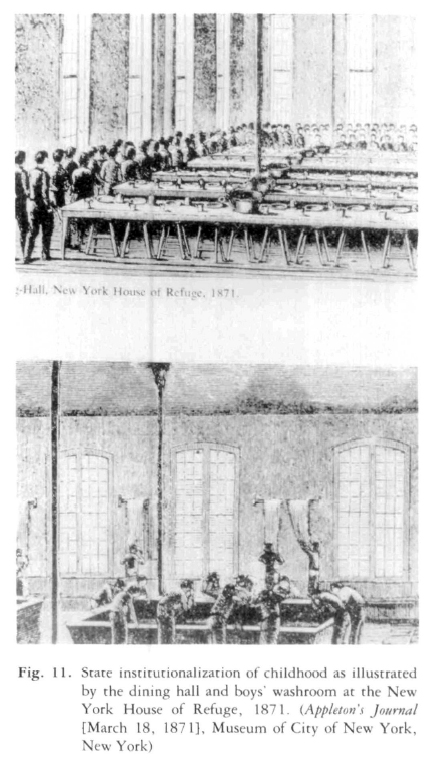 Display large image of Figure 11
Display large image of Figure 1145 In addition to this brief review of the material culture collection, exhibition, and interpretation of childhood that has been done and might be done, can we point to any other reasons in attempting to explain why an increasing number of researchers are presently intrigued with the history of North American childhood? Perhaps part of the answer is personal in that many scholars recognized the insight of the Dutch historian Johan Huizanga who wrote so eloquently of the human species as Homo Ludens — man, the player. Huizanga thought much of human creativity, society, and history could be viewed as play, and to many at times, childhood seems to be a time of almost pure play.37
46 Another part of the answer is professional in that many of us have either been trained in or been seriously influenced by social history and its interest in the history of powerless groups. Children have often been such a group, not only in their physical, economic, and legal dependency but also in their historical invisibility, that is, their inability to write or tell their own history. Many scholars seek to rectify this oversight. They wish to make a research contribution to the history of childhood and to integrate that story into the larger epic of the history of society.
47 Finally, the artifacts of childhood are an especially problematic type of evidence in general material culture studies.38 The physical evidence of past childhood, flawed as it is by the fecklessness in collection, romanticism in exhibition, and gender and age bias in generation, offers material culture researchers a special methodological challenge in their quest for possibilities and liabilities of artifacts as resources for culture inquiry.